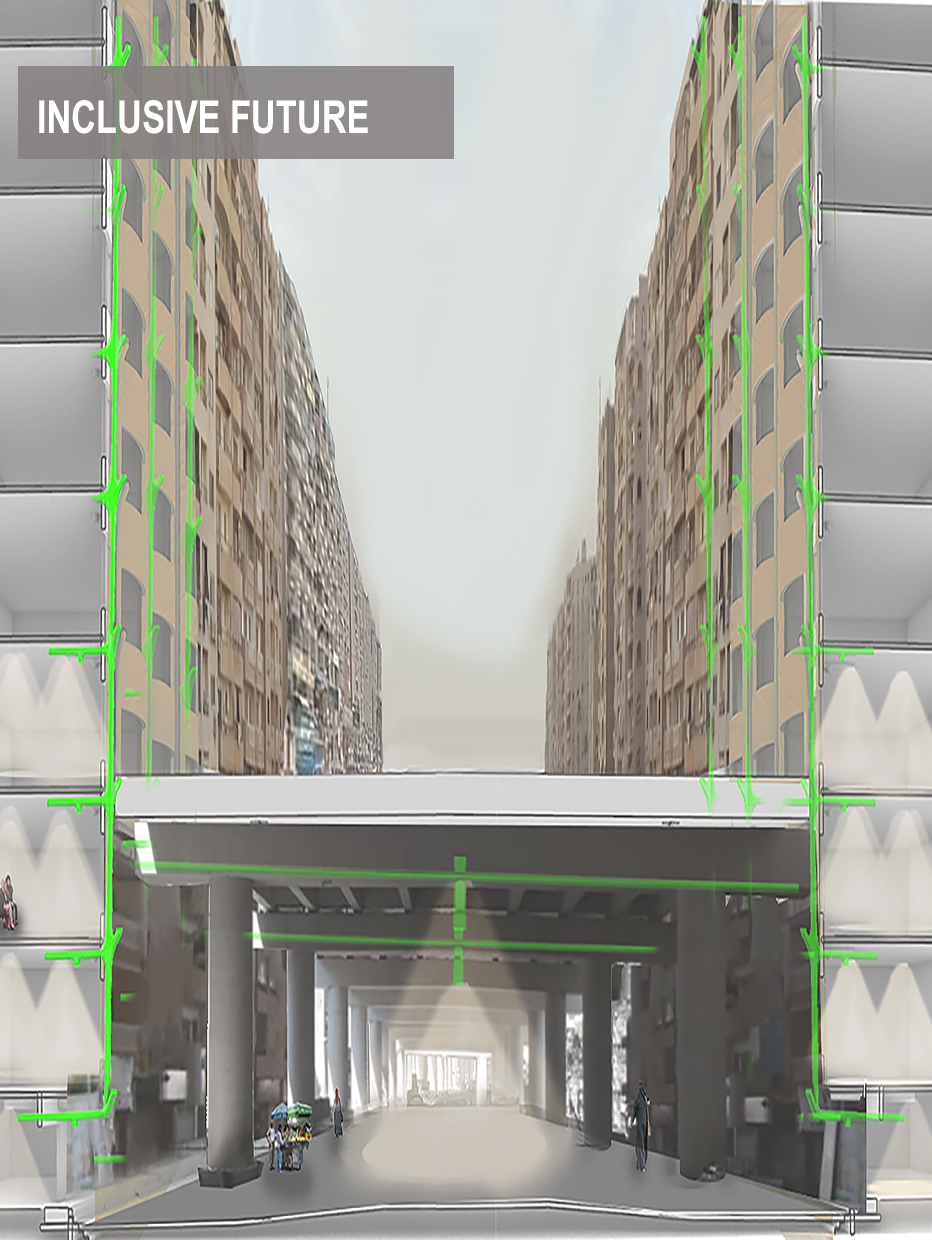Inclusive future

Category
Daylight in buildings - Region 5: Africa
Students
mahmoud mohamed ibrahim eldesokey
Youssef Mohammed ibrahim
Marwan Moustafa Elattar
Ahmed Gamal Abdelhamed
Teacher
Ali khaled Elewa
School
Helwan University
Country
Egypt
Download
Download ↓
The movement of architectural development and the construction of bridges and roads in the recent period is a big problem for some areas that are crowded with construction and random construction Although it has great benefits and benefits for the establishment of civilization and development, it negatively affects these areas One of these problems is the Nasr El-Din bridge in the ( Giza – Egypt ), which was built in an area with a large population density and was built with a width of 20 meters and a height of 10 meters, and This led to environmental problems for this residential area, as it blocked the sunlight from the area’s street, as well as the residential units located below the bridge level. The proximity of the bridge to residential apartments has sparked anger and ridicule on social media and among inhabitants who say they were misled.
It has also exposed a common source of tension as authorities try to develop and update infrastructure in a congested city of about 20 million where haphazard planning mixed in with informal housing has long been the norm. Poor lighting often gets overlooked in the workplace, as we talk about mental health and well-being, and the focus is firmly on creating happier and healthier spaces. But bad lighting is associated with a range of ill-health effects, both physical and mental, such as eye strain, headaches, fatigue and also stress and anxiety in more high-pressured work environments. As we spend much of the day in artificial lighting, there is evidence that the lack of natural sunlight has an adverse effect on the body and the mind, and can result in conditions such as seasonal affective disorder (SAD).As we navigate the darkest (and shortest days) of the year, 40% of office workers are struggling to work in poor lighting every day. This has a negative effect on their productivity and wellbeingMany areas may suffer from such problems, and accordingly this case was selected and a solution was found that suits this type of urban problem and may suit other similar cases. The project consists in lighting the residential buildings affected by the bridge construction, as well as lighting the area and the street below the bridge through light pipe transport, which are used in two steps. The first is vertical tubes installed on the facade of residential buildings with a condenser to collect light and enter it inside the tubes Then the second step of the system used, which is the use of branching horizontal tubes inside the lower floors of the buildings and also below the bridge level to spread the combined lighting and illuminate dark places This system was chosen for the simplicity of installation and the way it works. It is the most appropriate solution in these crowded, narrow spaces. It is also of low cost. It is made of available recycled materials. The results of that system for one tube were good, as it was lighting the internal housing units with a depth ranging from 10 to 15 meters inside the buildings, which led to high lighting efficiency as well as lighting the street and the public area

































